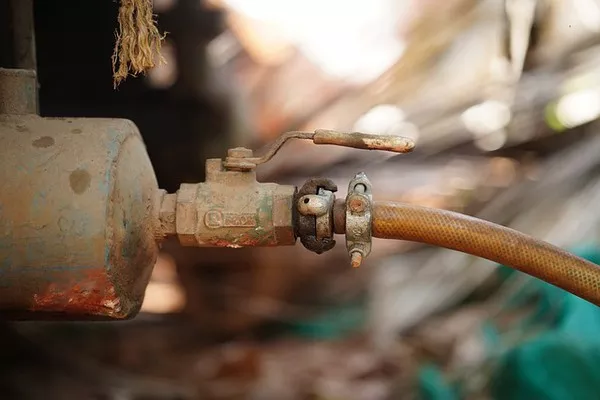Are you looking to optimize your use of a Makita air compressor for various projects? Understanding how to operate and maintain this essential tool is crucial for efficiency and longevity. In this comprehensive guide, we’ll delve into the specifics of utilizing your Makita air compressor effectively, covering topics ranging from setup and operation to maintenance and troubleshooting. Let’s explore the key aspects of harnessing the power of your Makita air compressor.
Understanding Your Makita Air Compressor: What Makes It Unique?
What distinguishes a Makita air compressor from other models on the market? Makita compressors are renowned for their quality engineering, reliability, and versatility. Before diving into operation, familiarize yourself with the specific features of your Makita model. Most Makita compressors are portable and designed for both DIY enthusiasts and professional contractors. They come in various sizes and capacities, from compact units suitable for light tasks to larger compressors capable of powering pneumatic tools on job sites.
To begin, ensure you have a clear understanding of the compressor’s specifications, including the tank size, horsepower (HP) rating, cubic feet per minute (CFM) output, and maximum pressure (measured in pounds per square inch or PSI). This knowledge is vital for selecting compatible pneumatic tools and ensuring optimal performance. Additionally, Makita air compressors often incorporate innovative technologies such as oil-free pumps for maintenance-free operation and low-noise designs for quieter use in indoor settings. Familiarizing yourself with these features sets the foundation for efficient and safe usage.
Setting Up Your Makita Air Compressor: How Do You Prepare for Operation?
What steps should you take to set up your Makita air compressor correctly? Begin by identifying a suitable location with ample space for ventilation and away from flammable materials. Ensure the compressor is placed on a stable surface to prevent vibration and potential accidents. Next, inspect the compressor for any shipping damage and verify that all components, including hoses, fittings, and accessories, are present and undamaged.
Before connecting the compressor to a power source, review the manufacturer’s instructions for specific setup requirements. Makita air compressors typically operate on standard household voltages (e.g., 120V or 240V), but confirm this information to avoid electrical issues. Prior to initial use, add oil to the compressor if necessary, following the guidelines outlined in the user manual. Once these preliminary steps are completed, connect the air hose securely to the compressor’s outlet using compatible fittings and ensure all connections are tight to prevent air leaks during operation.
Operating Your Makita Air Compressor: How Do You Use It Safely and Effectively?
How can you maximize the performance of your Makita air compressor while ensuring safety? Before starting the compressor, check that all valves are in the closed position and release any trapped air from the tank using the drain valve. Once prepared, plug in the compressor and allow it to build pressure until it reaches the cut-out level specified by the manufacturer. Avoid exceeding the maximum pressure rating to prevent damage to the compressor and associated components.
When using pneumatic tools with your Makita compressor, always use appropriate safety gear, including protective eyewear and hearing protection. Monitor the compressor’s operation for unusual sounds or vibrations, which could indicate potential issues requiring attention. If using the compressor for extended periods, periodically check oil levels (if applicable) and allow the unit to cool down between uses to prevent overheating.
Maintaining Your Makita Air Compressor: How Do You Keep It Running Smoothly?
What maintenance tasks are essential for preserving the performance and longevity of your Makita air compressor? Regular maintenance is key to preventing breakdowns and ensuring optimal efficiency. Begin by inspecting the compressor and accessories for signs of wear or damage after each use. Clean or replace air filters as recommended by the manufacturer to prevent dust and debris from entering the system.
Additionally, monitor oil levels in compressors equipped with oil lubrication systems and follow guidelines for oil changes to maintain proper lubrication and prevent premature wear. Keep the compressor’s exterior clean and free of debris to prevent overheating and maintain cooling efficiency. Periodically inspect hoses and fittings for leaks, tightening connections as needed to maintain air pressure integrity. Lastly, store the compressor in a clean, dry environment when not in use to protect it from environmental factors that could compromise its performance.
Troubleshooting Your Makita Air Compressor: What Do You Do When Issues Arise?
Encountering issues with your Makita air compressor? Troubleshooting common problems can help identify and resolve issues promptly. If the compressor fails to start, check the power source and ensure the compressor is plugged in correctly. Verify that the pressure switch is functioning correctly and that the tank pressure is within the specified range. If the compressor runs but fails to build pressure, inspect for air leaks and tighten fittings or replace damaged components as needed.
Unusual noises or excessive vibrations during operation could indicate worn-out bearings, loose components, or motor issues requiring professional attention. Refer to the user manual for troubleshooting guidance specific to your Makita model and consider consulting a qualified technician for complex repairs. Regularly scheduled maintenance can also mitigate potential issues before they escalate, prolonging the lifespan of your Makita air compressor.
See also What Air Compressor Do I Need To Blow Out Sprinklers
By mastering the operation, maintenance, and troubleshooting of your Makita air compressor, you can optimize its performance and reliability for a wide range of tasks. Remember to prioritize safety at all times and adhere to manufacturer recommendations for best practices. With proper care and attention, your Makita air compressor will continue to serve as an indispensable tool in your workshop or job site arsenal.

